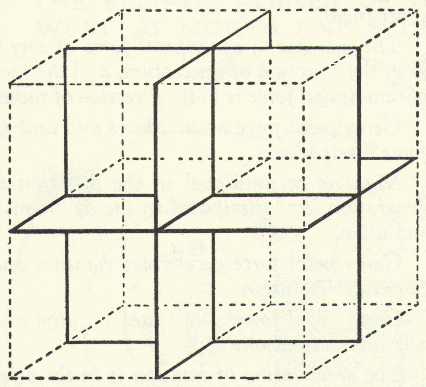The SVP Universal Cosmology
A Rosetta Stone for the New Science Paradigm
Version 1.0
Formation of Cubes
|
|
|
|

|
|
|

|
Cube corner retroreflectors operate on
the principle of total internal reflection. A beam entering the
corner is reflected by the three orthogonal reflecting surfaces and
returns parallel to itself. This return reflection property is
independent of orientation of the retro-reflector, within some angle
limitations.
6.7 -
Corner receivers from corners of cubes
Metallic corner reflectors are used on boats and are designed to enhance their appearance on radar so they can be more easily seen and avoided by other ships at sea. Corner reflectors comprise three flat mirrors that make a corner at right angles, so that the reflected ray retraces the path of the incoming ray (because the angle of incidence equals the angle of reflection). (See also Trihedral Corner)
Compound Cubes
|
|
|
|
Areas and Volumes - Relations and Proportions - Breadth (Area, Circle)
Cube Root of the Volume = SqRt of the Area = Length area of circle = PI*radius^2 Figures are RELATIVE PARTS 5153 = Prime circumference of circle 2^2*5153 = 20612 radius of circle = (2^4 * 5 * 41)+1 = 3281 diameter of circle 3^8 = 6561 area of circle = PI*radius^2 Sphere Volume (((PI)*(diameter)^3)/3)/2 Cube Volume 6561^3 = 282429536481 NOTE: 6561:5153 = Major Third [Russell, The Universal One, page 159] |
|
Sphere to Cube - Relations and Proportions - Thickness (Volume, Cubic) Volume decreases with increased potential. Cube Root of the Volume = SqRt of the Area = Length "Cubing the Sphere" Sphere Volume = 2*3^15*5153 = 147879835542 Cube Volume = 6561^3 = 282429536481 Ratio:- Sphere to Cube = Minor Seventh = 5:9::(2*3^15*5153):(6561^3) [Russell, The Universal One, page 163] |
